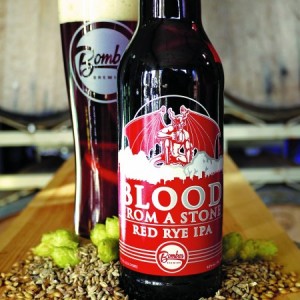 Collaboration brews – where two or more breweries cooperate to create a special, one-off beer – have become commonplace. A few years ago they were a rare item, but the practice has taken off recently and we see collaborations from a whole host of breweries around the world.
Collaboration brews – where two or more breweries cooperate to create a special, one-off beer – have become commonplace. A few years ago they were a rare item, but the practice has taken off recently and we see collaborations from a whole host of breweries around the world.
Like many bandwagon things, I find the inspiration behind collaborations has become diluted and/or muted. Back when they first started becoming “a thing”, collaborations brought two brewing styles or traditions together to create synergies, or they were to celebrate an important event or milestone. I think about Brooklyn partnering with Schneider to create a fascinating hop-oriented hefeweizen, or the Sierra Nevada/Anchor collaboration to celebrate 30 years of craft brewing. These days I often find it hard to find the significance behind the collaboration.
Of course things like the Alberta Unity Brew, where all of Alberta’s craft brewers get together to make a beer once a year and the proceeds go to charity, are admirable and make complete sense to me – they are fostering community and contributing to charity. But two breweries from different regions getting together isn’t enough to make me stand up and take notice. I need something more.
I mention all this because I recently saw a collaboration beer that truly surprised me, even though I have no idea why or how it happened. My surprise arose from the participants. On of the collaborators was Stone Brewing – no real shocker there as they have done this kind of thing before. It was the other partner that got me: Bomber Brewing from Vancouver. This small brewery has been open less than a year. While I am yet to taste their beer and so cannot comment on the quality, Bomber has yet to really make much of a mark in the brewing world (this is not a criticism – they are very young – just an observation).
You might be able to see why I was surprised at the pairing. An internet search didn’t really reveal a good reason why Stone chose Bomber (I am assuming they had most of the control over the decision given their size) and I am too lazy to call anyone and ask.
The beer that came out of the collaboration is Blood From a Stone, a red rye IPA (I will refrain from grumping about the ever expanding adjectives attached to IPA for the moment). At 6.8% alcohol and 60 IBUs it has a formidable stats sheet befitting Stone.
It pours dark rusted copper with a brownish edge. It forms a sizable light tan head with moonscape-like craters and a dense consistency. The aroma offers dry nut, burnt toffee, some light caramel and toffee, and a toasty brown sugar character. I detect a bit of sharpness in the nose which could be the rye.
The front is a moderate rich malt along with some cinnamon toast, light toffee and slight brown sugar note. The hops build fast, coming in resiny, piney and thick. The malt doesn’t dissipate and so can offer up some balance to the hop onslaught. The linger offers pine, spruce and thick resin.Throughout the tasting I never really pick up a particular rye flavour or mouthfeel.
While this is an interesting, creative beer I am not sure it reaches its full potential. The malt and hops don’t blend as well as they could and I simply do not pick up any rye character at all, which is disappointing as that would have added an interesting complexity to the beer. Still, I don’t regret trying it.
Now if I can only figure out the purpose behind the collaboration in the first place.

Leave a Reply